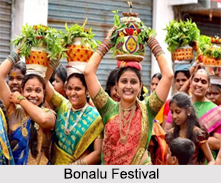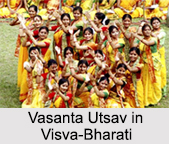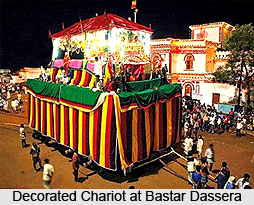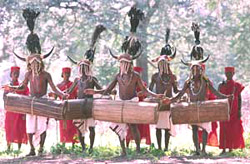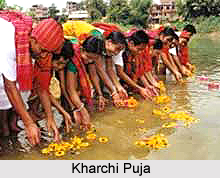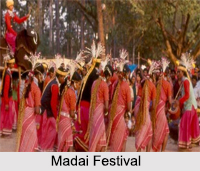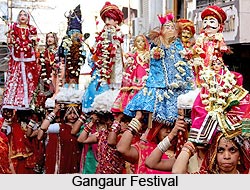 Gangaur festival is an important festival of the people of Rajasthan. While Gan is the name of Lord Shiva, Parvati is referred to as Gauri. The goddess is the consort of lord Shiva. Gangaur Festival is based on a legend. According to the popular myth after a long penance Gauri and Shiva reunited on this day. Idols of the god and goddesses are in the shape of small dolls. These are generally made of wood. Both married and would be brides participate in the festival seeking conjugal bliss. This festival represents marital fidelity.
Gangaur festival is an important festival of the people of Rajasthan. While Gan is the name of Lord Shiva, Parvati is referred to as Gauri. The goddess is the consort of lord Shiva. Gangaur Festival is based on a legend. According to the popular myth after a long penance Gauri and Shiva reunited on this day. Idols of the god and goddesses are in the shape of small dolls. These are generally made of wood. Both married and would be brides participate in the festival seeking conjugal bliss. This festival represents marital fidelity.
On the evening of the 7th day after Holi, unmarried girls walk from house to house carrying specially made earthen pots with numerous holes all around. Inside it an oil lamp or is placed. As they walk around the village they sing the songs of Ghudla. They receive refreshments and small presents of cash, sweets, jaggery, ghee and oil from the several household that they visit. The festival culminates on the 18th day with the arrival of Lord Shiva to escort his bride home. It is must for a married girl to observe the eighteen days of the festival as it is believed that her marriage would be successful. The festivities start on the third day of shukla paksha of chaitra month. This festival is also celebrated in parts of Madhya Pradesh, Haryana and Gujarat.
The festival of Gangaur is celebrated all over Rajasthan. However the rituals may vary slightly from region to region. In Jaipur on the 18th day, a procession starts from the Tripolia Gate and moves on the city streets. The procession has idols of Issar and Gangaur in a decorated palanquin. Drummers, dancers, elephants and horses make this procession a visual treat. In Jodhpur too the festival is celebrated on a similar line. But the place to witness Gangaur festival is Udaipur. The celebrations generally take place in March or April.
Clay images of Isar and Gauri are made for the festival. In some Rajput families, wooden images are painted afresh every year by painters called matherans during the festival. The Gangaur idols have no canopy.
The ladies on this occasion decorate their hands and feet with Mehndi. The figures drawn range from the Sun, Moon and the starts to simple flowers or geometrical designs. On the evening of the 7th day after Holi, unmarried girls go around singing songs of ghudlia carrying the pots on their heads. The images of Gauri and Isar are dressed in new garments and make them look like living figures.
In the afternoon at an auspicious hour, a procession is taken out to a garden, bawdi or johad with the images of Isar and Gauri, placed on the heads of married women. Songs are sung as Gauri leaves for her husband`s house. The procession comes back after offering water to the first two days. On the final day, she faces in the same direction as Isar and the procession concludes in the shipment of the all images in the waters of a tank.
The Gangaur of Jaipur is known all over the world. A sweet dish is a ghewar is characteristic of the Gangaur festival. It is distributed among their friends and relatives. A procession, with the Gauri`s image, starts from the Zanani-Deodhi of the City Palace, then passes through Tripolia Bazaar, Chhoti Chaupar, Gangauri Bazaar, Chaugan stadium and finally converges near the Talkatora.
